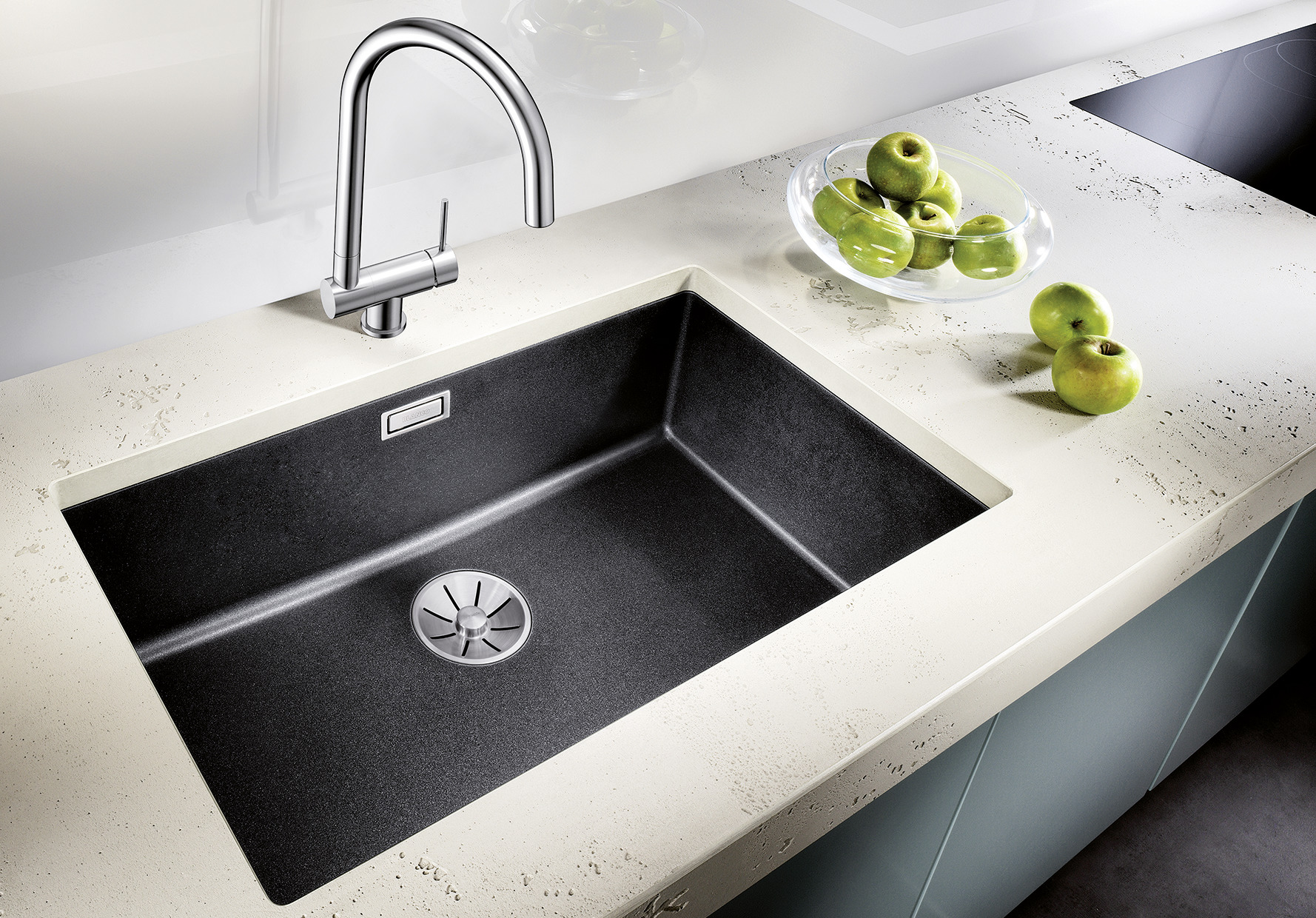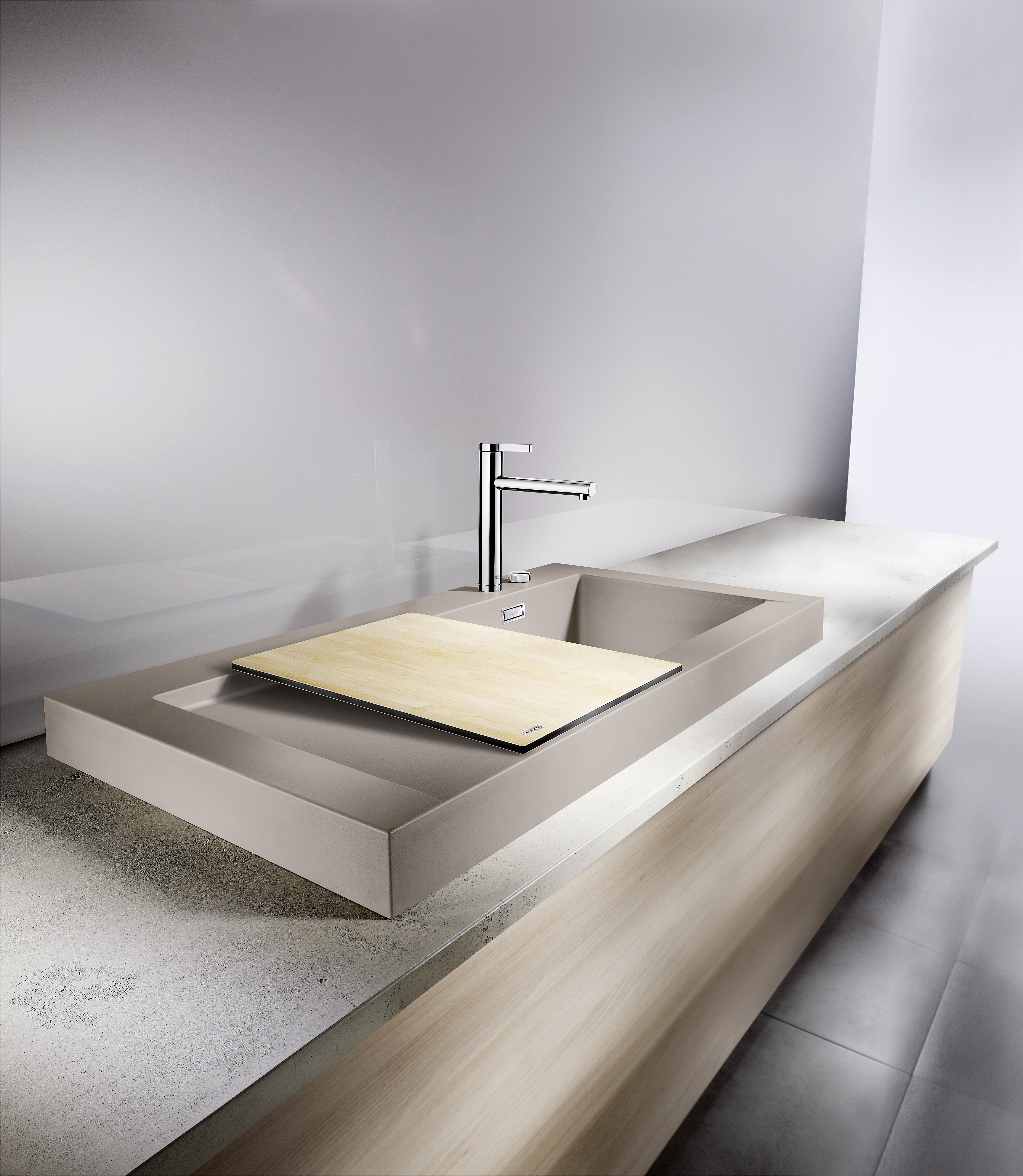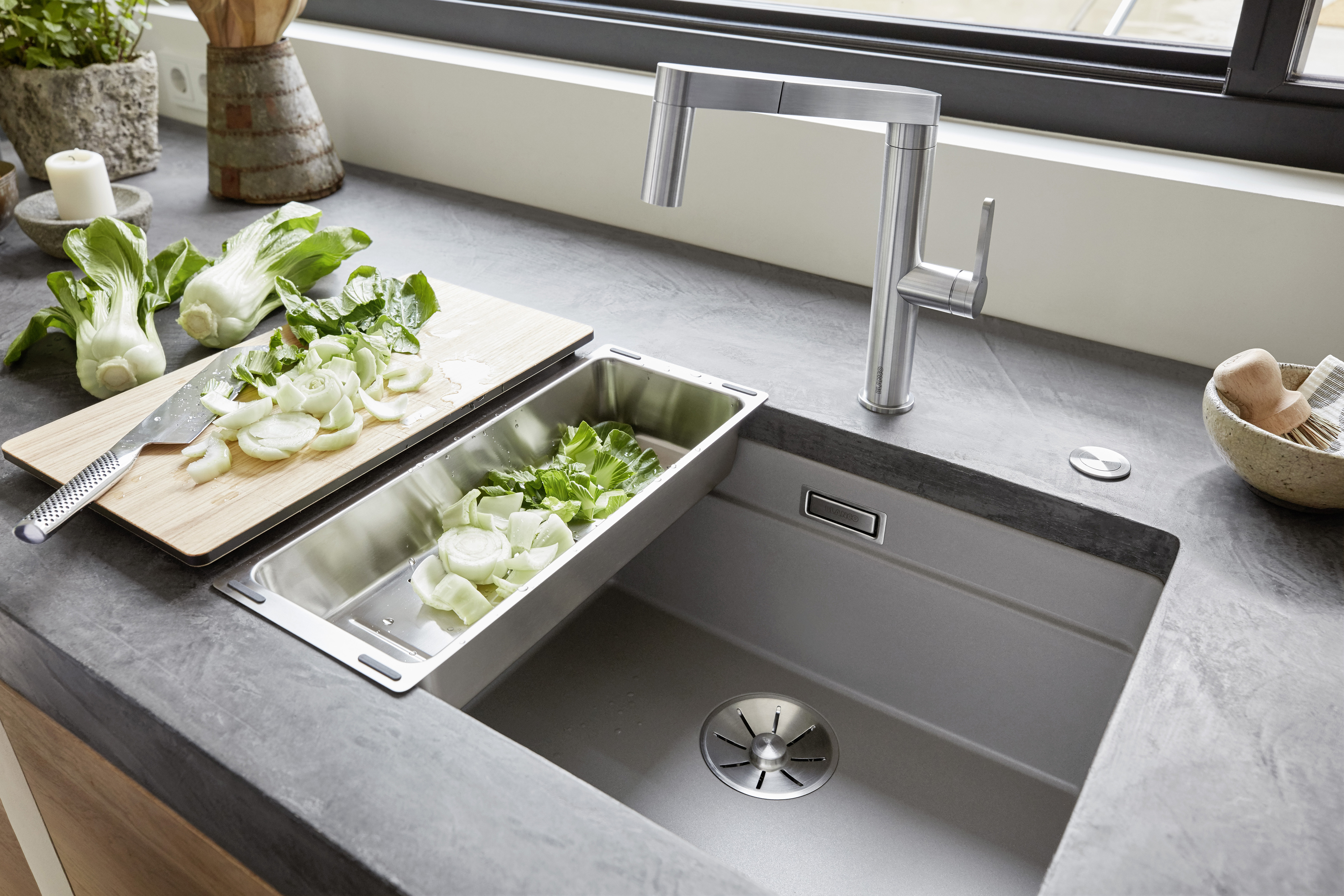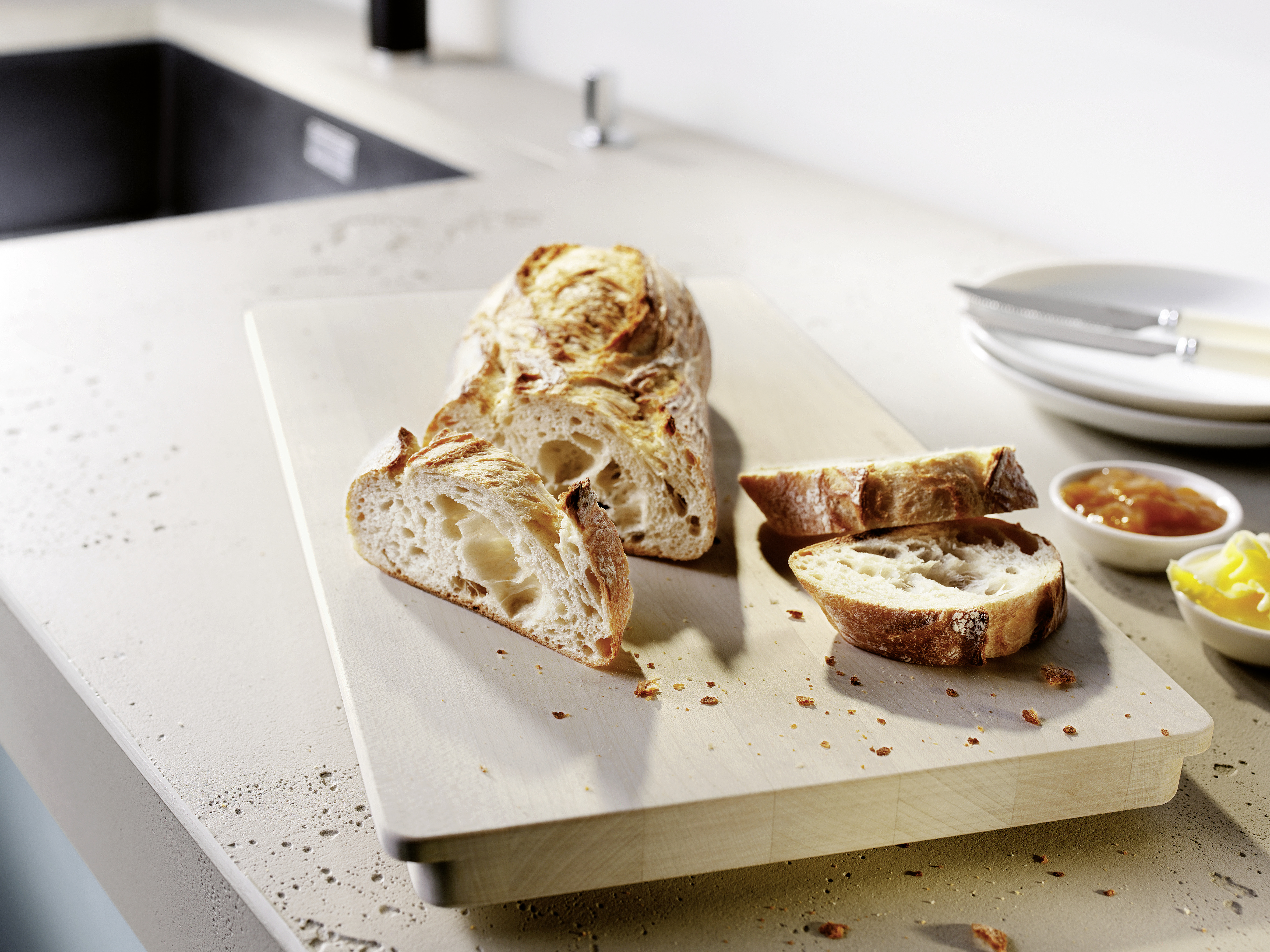Concrete in the Kitchen:
The new must-have!




Cleaning and caring for this modern material
- Avoid contact with acidic liquids, which can attack your concrete surfaces. These include coffee, tea, wine, champagne, fruit juices, ketchup, mustard, vinegar and citrus-based cleaning products.
- Always use a protective board when chopping fruit and vegetables on concrete kitchen surfaces.
- Never clean your concrete surfaces with vinegar- or citrus-based cleaning products. These won’t get rid of marks, but will cause new ones. Please do not use commercial descalers to remove limescale marks.
- Concrete also reacts to hot and cold pots, leaving unsightly lines. The same applies here: use a trivet.
Manufacturers of concrete products like betoniu recommend thoroughly waterproofing and sealing concrete before use. To refresh the protection of concrete surfaces against dirt, oil or wax-polish your concrete furniture or kitchen panels regularly. Oiling lightly seals the concrete surface in a natural way, making it repellent to dirt and water. Concrete kitchen panels should be treated with plenty of oil every couple of weeks for the first couple of months. To do this, simply drench the surface with oil using a rag, then soak up any excess. After that, you’ll only need to repeat the oil treatment twice a year. When it comes to cleaning concrete, use stone soap or curd soap and clean water.

Stainless steel worktop
The elegant, puristic CLARON Durinox bowls are an impressive combination of pared-back design and functionality.
read more